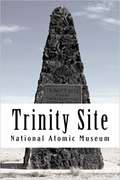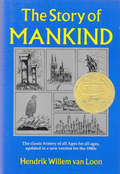- Table View
- List View
Aulos and lyre (Large Print)
by RnibOn this page are two images of musical instruments: an ancient Greek aulos and a lyre. There is a locator dot shown, which will be at the top left of the page when the image is the correct way up. The aulos is similar to two oboes fixed together at their mouthpieces. The two double reeds of the instrument are in the top centre of the page. Down and left from this are the barrels of the two pipes. The one on the left has four finger holes and the one on the right seven. The bells of the instrument are in the bottom left corner of the page. The lyre is on the right of the page. It is a stringed instrument similar to a harp. This one is made from the shell of a tortoise and two horn-shaped pieces of wood. At the top right, you can find the tips of the two horns. They curve out and down to the tortoise shell at the bottom of the page, which acts as a resonator that makes the sound louder. The strings are fixed to the end of the shell at the bottom of the page. They go up the page over the bridge in the centre of the shell to where they are fixed to the crosspiece between the twohorns. The instrument is played by plucking its strings.
History of the Catholic Church; from the Renaissance to the French Revolution, Volume 1
by James MaccaffreyCousin Pons
by Honoré De BalzacMild, harmless and ugly to behold, the impoverished Pons is an ageing musician whose brief fame has fallen to nothing. Living a placid Parisian life as a bachelor in a shared apartment with his friend Schmucke, he maintains only two passions: a devotion to fine dining in the company of wealthy but disdainful relatives, and a dedication to the collection of antiques. When these relatives become aware of the true value of his art collection, however, their sneering contempt for the parasitic Pons rapidly falls away as they struggle to obtain a piece of the weakening man's inheritance. Taking its place in the Human Comedy as a companion to Cousin Bette, the darkly humorous Cousin Pons is among of the last and greatest of Balzac's novels concerning French urban society: a cynical, pessimistic but never despairing consideration of human nature.
Letters of Two Brides
by Honoré De BalzacBy the French author, who, along with Flaubert, is generally regarded as a founding-father of realism in European fiction. His large output of works, collectively entitled The Human Comedy (La Comedie Humaine), consists of 95 finished works (stories, novels and essays) and 48 unfinished works. His stories are an attempt to comprehend and depict the realities of life in contemporary bourgeois France. They are placed in a variety of settings, with characters reappearing in multiple stories.
Letters to His Son, 1756-58 / On the Fine Art of Becoming a Man of the World and a Gentleman
by Earl of Philip Dormer Stanhope ChesterfieldEarl of Philip Dormer Stanhope Chesterfield was an 18th century British aristocrat best known for his wit and for being a man of letters. His works offer a great insight into what life was like during the time period in England.
Letters to His Son, 1759-65 / On the Fine Art of Becoming a Man of the World and a Gentleman
by Earl of Philip Dormer Stanhope ChesterfieldEarl of Philip Dormer Stanhope Chesterfield was an 18th century British aristocrat best known for his wit and for being a man of letters. His works offer a great insight into what life was like during the time period in England.
The Story of Mankind
by Hendrik Van LoonWHEN I was twelve or thirteen years old, an uncle of mine who gave me my love for books and pictures promised to take me upon a memorable expedition. I was to go with him to the top of the tower of Old Saint Lawrence in Rotterdam. And so, one fine day, a sexton with a key as large as that of Saint Peter opened a mysterious door. "Ring the bell," he said, "when you come back and want to get out," and with a great grinding of rusty old hinges he separated us from the noise of the busy street and locked us into a world of new and strange experiences. For the first time in my life I was confronted by the phenomenon of audible silence. When we had climbed the first flight of stairs, I added another discovery to my limited knowledge of natural phenomena—that of tangible darkness. A match showed us where the upward road continued. We went to the next floor and then to the next and the next until I had lost count and then there came still another floor, and suddenly we had plenty of light. This floor was on an even height with the roof of the church, and it was used as a storeroom. Covered with many inches of dust, there lay the abandoned symbols of a venerable faith which had been discarded by the good people of the city many years ago. That which had meant life and death to our ancestors was here reduced to junk and rubbish. The industrious rat had built his nest among the carved images and the ever watchful spider had opened up shop between the outspread arms of a kindly saint. Then darkness once more and other ladders, steeper and even more dangerous than those we had climbed before, and suddenly the fresh air of the wide heavens. We had reached the highest gallery. Above us the sky. Below us the city—a little toy-town, where busy ants were hastily crawling hither and thither, each one intent upon his or her particular business, and beyond the jumble of stones, the wide greenness of the open country. History is the mighty Tower of Experience, which Time has built amidst the endless fields of bygone ages. It is no easy task to reach the top of this ancient structure and get the benefit of the full view. There is no elevator, but young feet are strong and it can be done. Here I give you the key that will open the door. When you return, you too will understand the reason for my enthusiasm. HENDRIK WILLEM VAN LOON.<P><P> Newbery Medal Winner (the first one!)
Mark Twain's Letters -- Volume 1 (1853-1866)
by Mark TwainNowhere is the human being more truly revealed than in his letters. Not in literary letters-prepared with care, and the thought of possible publication-but in those letters wrought out of the press of circumstances, and with no idea of print in mind. A collection of such documents, written by one whose life has become of interest to mankind at large, has a value quite aside from literature, in that it reflects in some degree at least the soul of the writer. The letters of Mark Twain are peculiarly of the revealing sort. He was a man of few restraints and of no affectations. In his correspondence, as in his talk, he spoke what was in his mind, untrammeled by literary conventions. Review.
Mark Twain's Letters -- Volume 2 (1867-1875)
by Mark TwainHere is young Sam Clemens—in the world, getting famous, making love—in 155 magnificently edited letters that trace his remarkable self-transformation from a footloose, irreverent West Coast journalist to a popular lecturer and author of The Jumping Frog, soon to be a national and international celebrity. And on the move he was—from San Francisco to New York, to St. Louis, and then to Paris, Naples, Rome, Athens, Constantinople, Yalta, and the Holy Land; back to New York and on to Washington; back to San Francisco and Virginia City; and on to lecturing in Ohio, Michigan, Pennsylvania, and New York. Resplendent with wit, love of life, ambition, and literary craft, this new volume in the wonderful Bancroft Library edition of Mark Twain's Letters will delight and inform both scholars and general readers.


